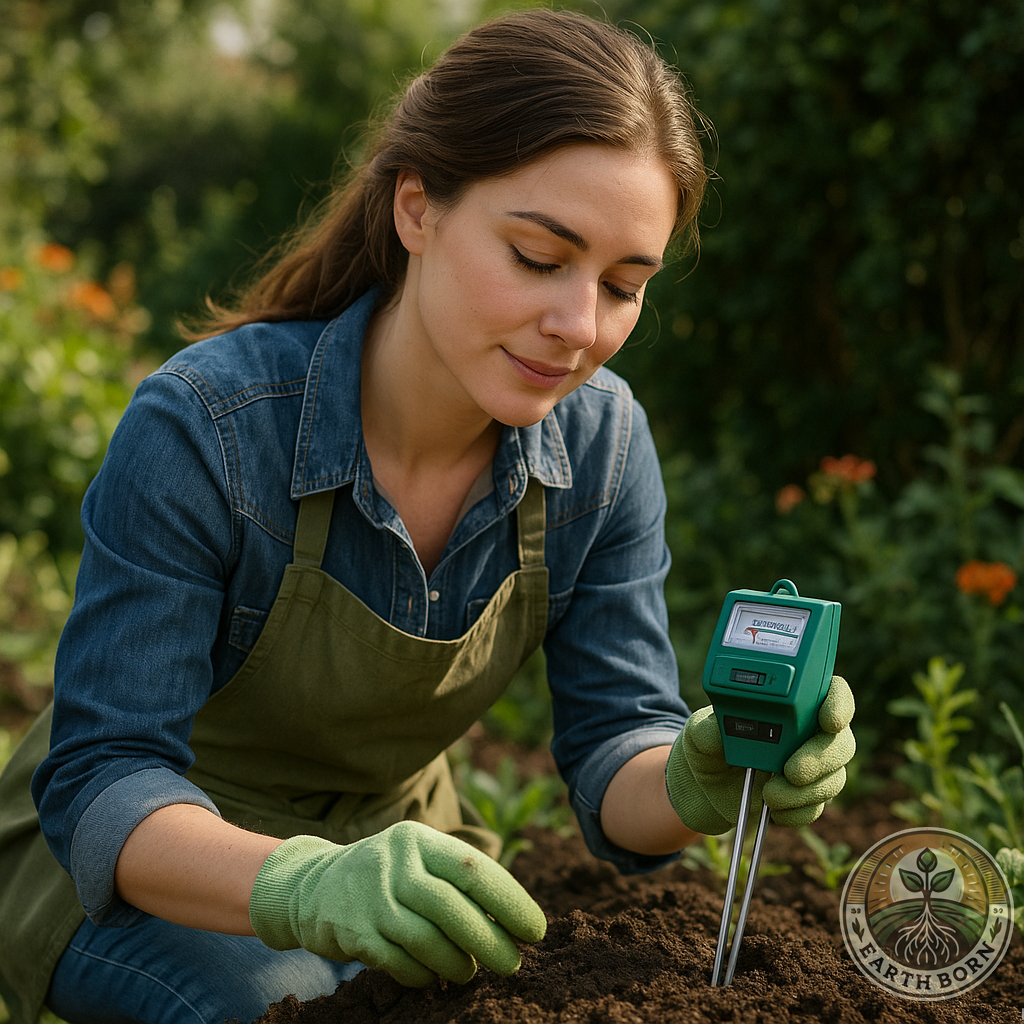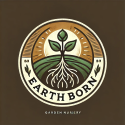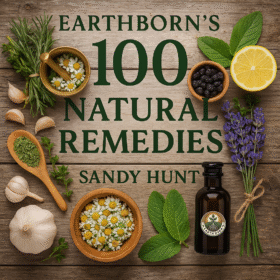
Want lush, thriving plants? Don’t focus on feeding the plant — focus on feeding the soil.
Healthy soil is alive — teeming with microbes, fungi, earthworms, and organic matter. When you care for the soil, it becomes a self-sustaining ecosystem that naturally provides everything your plants need to grow strong, resilient, and nutrient-rich.
🔄 Nature’s Secret:
Plants don’t eat fertilizer — they absorb nutrients released by soil life. If your soil is rich in organic matter, humus, and biological activity, your plants will flourish without the need for constant external inputs.
In South Africa, where climates vary from region to region, understanding your soil is one of the most powerful tools in your growing journey. Rich, crumbly, well-draining soil with the right balance of nutrients and pH doesn’t always come naturally — but with a little know-how and a few simple home tests, you can unlock your soil’s potential.
🧪 How to Test Your Soil at Home
1. 🤠 Test Your Soil Texture
Loamy soil is the ideal blend — made up of just the right balance of sand, silt, and clay. It’s soft, crumbly, and holds moisture without becoming waterlogged.
✋ Quick Squeeze Test (No Tools Needed)
- Take a handful of moist (not wet) soil from your garden.
- Squeeze it into a ball.
- Poke it with your finger.
What it means:
- If it crumbles apart easily → Mostly sandy
- If it stays firm and cracks → Mostly clay
🧪 Jar Test for a More Accurate Read
What you’ll need:
- 1 cup garden soil (taken 10–15 cm deep)
- A tall glass jar with a tight lid
- Dishwashing liquid
- Water
Steps:
- Remove stones and break up clumps.
- Fill jar ¾ full with water.
- Add a squirt of dish soap and the soil.
- Shake vigorously.
- Let settle for 2–3 days on a level surface.
What you’ll see:
- Bottom layer: Sand
- Middle layer: Silt
- Top layer: Clay
Now estimate the percentages:
- More than 50% clay → Clay soil
- 80%+ sand → Sandy soil
- A balanced mix → Loamy soil (ideal!)
🪵 Add Charcoal for a Living Sponge
Mixing natural charcoal (also known as biochar) into your soil can work wonders. Charcoal acts like a sponge — holding water and nutrients in the soil while creating tiny pockets for beneficial microbes to thrive. It improves drainage in clay soil and moisture retention in sandy soil. Over time, biochar becomes a permanent home for microbial life, boosting fertility and plant health for years to come.
2. 🌿 Check Your Soil pH — Naturally
Not all herbs like the same soil! Acid-loving herbs such as parsley, thyme, basil, and rosemary do well in slightly acidic soils (pH 5.5–6.5). On the other hand, herbs like lavender, oregano, and sage prefer more alkaline or neutral soils (pH 6.5–7.5). Understanding your soil pH can help you group herbs for healthier growth — or amend the soil naturally using compost, pine needles (to lower pH), or lime (to raise pH).
Most garden plants thrive in a slightly acidic to neutral pH (5.5–7.5). Outside this range, roots struggle to absorb nutrients.
🧪 DIY pH Test: No Kit Needed
To test for alkaline soil:
- Scoop soil from 10–15 cm deep.
- Place in a glass jar with enough water to make mud.
- Add ½ cup white vinegar and stir.
- Fizzes? Your soil is alkaline.
To test for acidic soil:
- Use fresh soil, same depth and method.
- Add ½ cup baking soda instead.
- Fizzes? Your soil is acidic.
No reaction in either? You’ve got neutral soil — the sweet spot for most herbs and veggies.
🛠️ Natural Remedies to Balance Soil pH
- 🌡️ Too Alkaline? Water with 1 cup vinegar per 4L of water.
- 🔬 Too Acidic? Water with 1 tablespoon baking soda per 4L of water.
Note: Always retest after a few weeks, and adjust slowly to avoid shocking your plants.
🌿 Earthborn Tip
Choose companion plants that naturally suit your soil’s texture and pH — and remember, healthy soil isn’t just dirt. It’s alive, teeming with microbes and nutrients that support everything you grow.
🌾 Boost Nitrogen the Natural Way
Nitrogen is essential for leafy growth, and you don’t need synthetic fertilizers to supply it. Add well-rotted manure, worm castings, or composted kitchen scraps like banana peels and coffee grounds. Grow nitrogen-fixing cover crops such as clover, alfalfa, or beans and chop them into the soil before flowering. Even grass clippings (used as mulch) release nitrogen as they break down — a simple, sustainable way to enrich your soil.
♻️ Make Your Own Natural Compost
Composting is one of the most powerful ways to feed your soil. Combine “greens” (like fruit and veggie scraps, coffee grounds, and fresh grass clippings) with “browns” (like dry leaves, cardboard, and straw) in layers. Keep it moist, turn it weekly for airflow, and in a few weeks, you’ll have rich, crumbly compost full of nutrients and microbial life. Avoid adding meat, dairy, or oily foods — stick to plant-based materials for a healthy, balanced compost pile.
🌾 How to feed the soil:
- Add compost regularly
- Use mulch to retain moisture and protect microbes
- Avoid chemical fertilizers and pesticides
- Add charcoal or biochar for water and microbe retention
- Plant nitrogen-fixing crops or use natural composts
- Rotate crops and plant cover crops
- Let roots decompose naturally to feed the underground network
💚 When you shift your mindset from feeding plants to nourishing the soil, your entire garden transforms. Build the soil — and the soil will take care of your plants. Every time. ✨


 **Meet Sprout!** Sprout is your friendly gardening companion at Earthborn, always ready with helpful advice on plant care, medicinal herbs, and natural gardening solutions. From seedling to harvest, Sprout provides expert guidance to nurture your garden and your well-being—making gardening easy, fun, and naturally rewarding.
**Meet Sprout!** Sprout is your friendly gardening companion at Earthborn, always ready with helpful advice on plant care, medicinal herbs, and natural gardening solutions. From seedling to harvest, Sprout provides expert guidance to nurture your garden and your well-being—making gardening easy, fun, and naturally rewarding.
